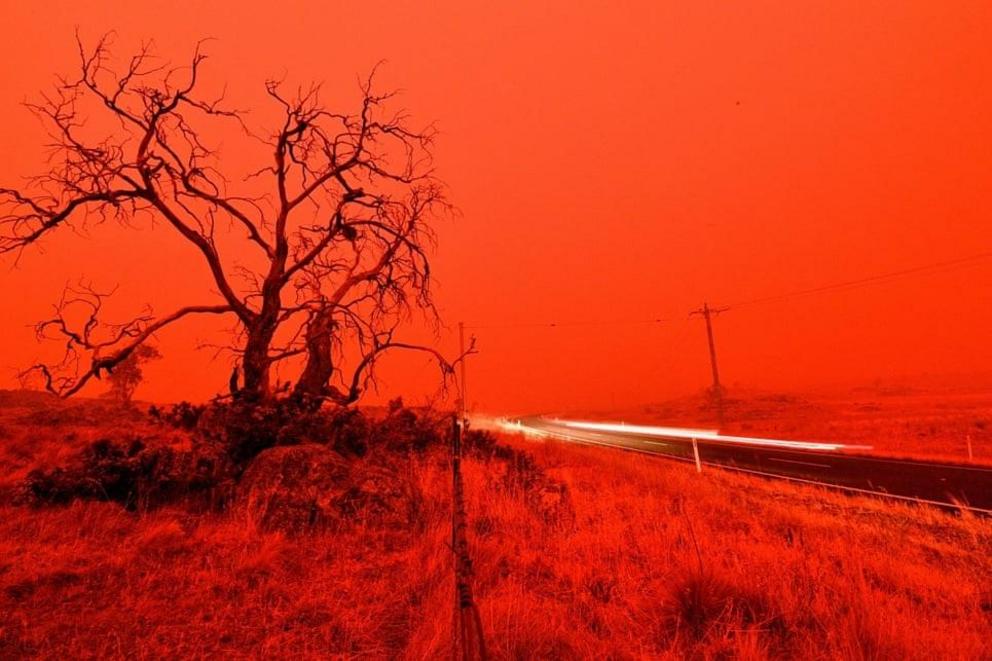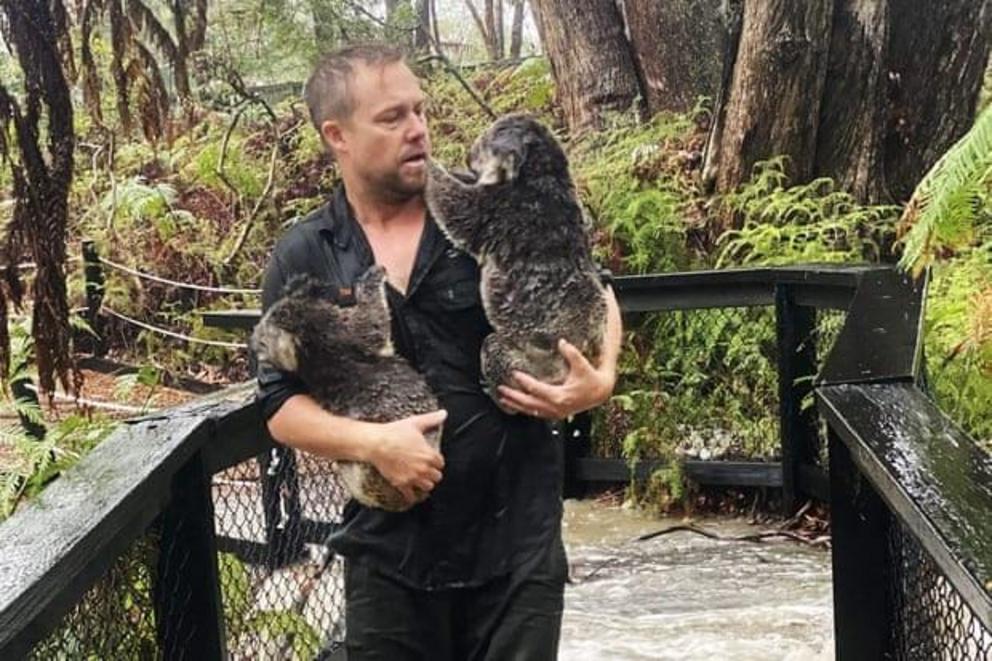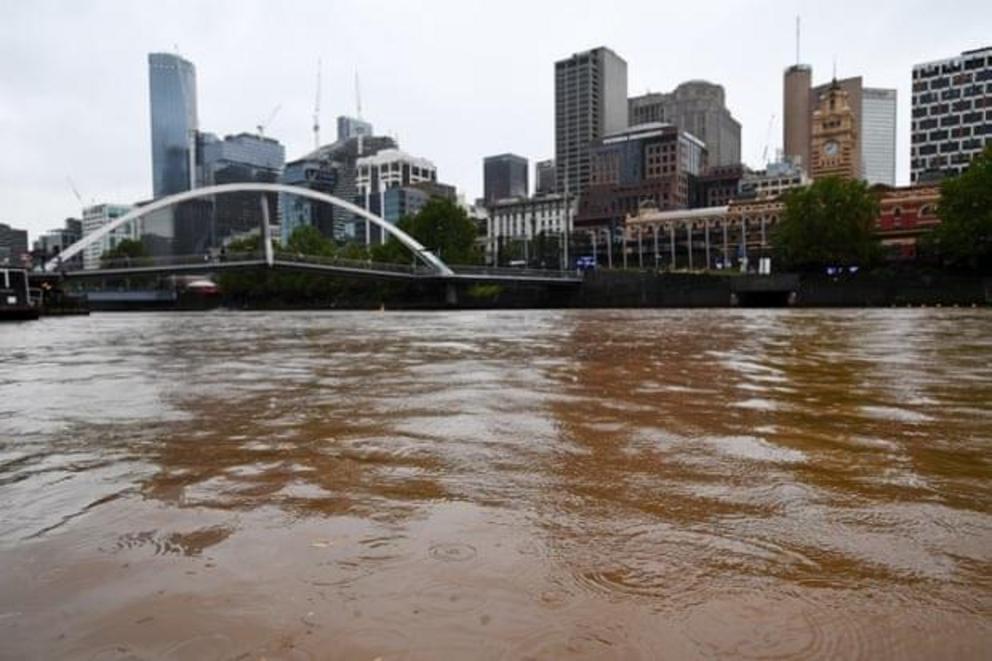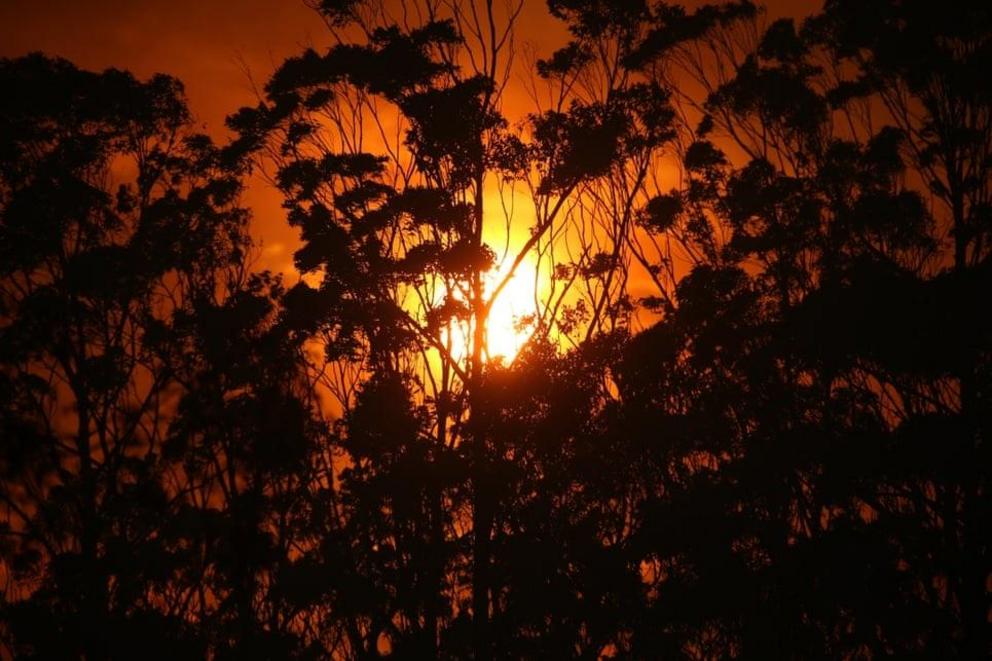Bushfires, ash rain, dust storms and flash floods: two weeks in apocalyptic Australia
A child running towards a dust storm in Mullengudgery in New South Wales.
As the country lurches painfully from one extreme weather to another, residents are fearful of what they will face next.
In Australia this summer, talking about the weather inevitably leads to talking about the apocalypse.
“When’s the plague of locusts going to arrive?” jokes one Sydney resident after hearing reports that her city is to receive another storm of giant hailstones on Friday afternoon, just a day after it sweltered in temperatures of 40C and toxic smoke kept people stuck indoors, away from the respite of the beach.
A barista serving coffees to customers outside his cafe sees the spots of ash rain peppering their skin like freckles. Ash rain – such a common sight now it feels strange to think it needs an explanation – is caused as the rain picks up the smoke, the filth, the charred debris floating over cities and towns from huge nearby bushfires. Experts warn it could have a devastating impact on water supplies. Handing out the coffees the barista jokes darkly: “What next? Sars-rain?”
That desperate question has hung over this terrible Australian summer, still far from over. What next? What now? What more could we possibly take?
There have been, obviously and most devastatingly, the bushfires. On Thursday, there were three more deaths from the fires, this time US firefighters who were killed when their waterbombing plane crashed. At least 32 people have died in the fires since they began in October and at least a billion animals have been killed. Nearly 8m hectares of land – an area more than three times the size of Wales – has been destroyed in the south-eastern states.
But then there has been everything else, as Australia has lurched painfully from one extreme of weather to the next.
 A long-exposure picture shows a car on a road as the sky turns red from the smoke of the Snowy valley bushfire on the outskirts of Cooma, New South Wales.
A long-exposure picture shows a car on a road as the sky turns red from the smoke of the Snowy valley bushfire on the outskirts of Cooma, New South Wales.
Last Wednesday, there were flash floods in Melbourne, while just 125 miles (200km) away, brutal fires tore through remote communities.
The next day rain came to Sydney – the first significant rainfall the city and its scorched surrounds have seen all summer. People breathed a sigh of relief, children danced in puddles, and the downpour helped firefighters to control the spread of the fires, but the rain has not been enough to put them out.
And then, though it feels sacrilegious to say this, there were the downsides of the rain.
 An Australian Reptile Park staff member carrying koalas during a flash flood in Somersby, north of Sydney.
An Australian Reptile Park staff member carrying koalas during a flash flood in Somersby, north of Sydney.
Bushfire ash and sludge was washed into rivers and waterways and is estimated to have killed hundreds of thousands of native fish. The fires had stripped the land of brush and undergrowth, meaning that when the rain fell it led to flash flooding. At one animal park north of Sydney the floods swelled the crocodile enclosure to such a degree that zookeepers had to fight crocodiles off the banks, pushing them back into the water with brooms.
And, just when people had recovered from the whiplash of the rain, came the next thing: mighty dust storms that charged across the flat, brown horizons of drought-stricken land in western New South Wales.
 Golf ball-size hail after a severe storm at Parliament House in Canberra.
Golf ball-size hail after a severe storm at Parliament House in Canberra.
That same day, in Melbourne, the hail arrived; huge chunks of ice, the size of golf balls, pounded the land. When the hailstorms reached Canberra the next day, the ice shredded trees, shattered windscreens and tragically – adding to the biodiversity loss – killed hundreds of bats. In the Blue Mountains, west of Sydney, where 80% of the world heritage forest has been destroyed by fire this season, there were storms that led to two people being hospitalised after they were injured by lightning.
On Thursday, people awoke to find the Yarra River, which snakes through the centre of Melbourne, had turned brown. Brown rain fell across the city, filling bird baths and swimming pools with dirty sludge, a result of the rain collecting dust from the dust storms.
 The Yarra River filled with dust in Melbourne.
The Yarra River filled with dust in Melbourne.
As the week closes out, fires still rage across the east of the country. People continue to choke on suffocating particle-laden air. A heatwave building in Western Australia looks likely to spread to the burning east coast from next week causing concerns that conditions will worsen.
The devastating, unthinkable summer continues, and the end is not yet in sight.
And whether Australians are contemplating the big questions – such as how to rebuild, if the devastated wildlife and scarred land can ever recover, whether this crisis will finally push the government to action on the climate crisis – or are just waking each day to check the weather forecast, the air quality index, the “fires near me” app, the questions we are asking are the same: what next? What now? What more?
 A red sunset as a fire approaches Potato Point on the south coast of New South Wales.
A red sunset as a fire approaches Potato Point on the south coast of New South Wales.

